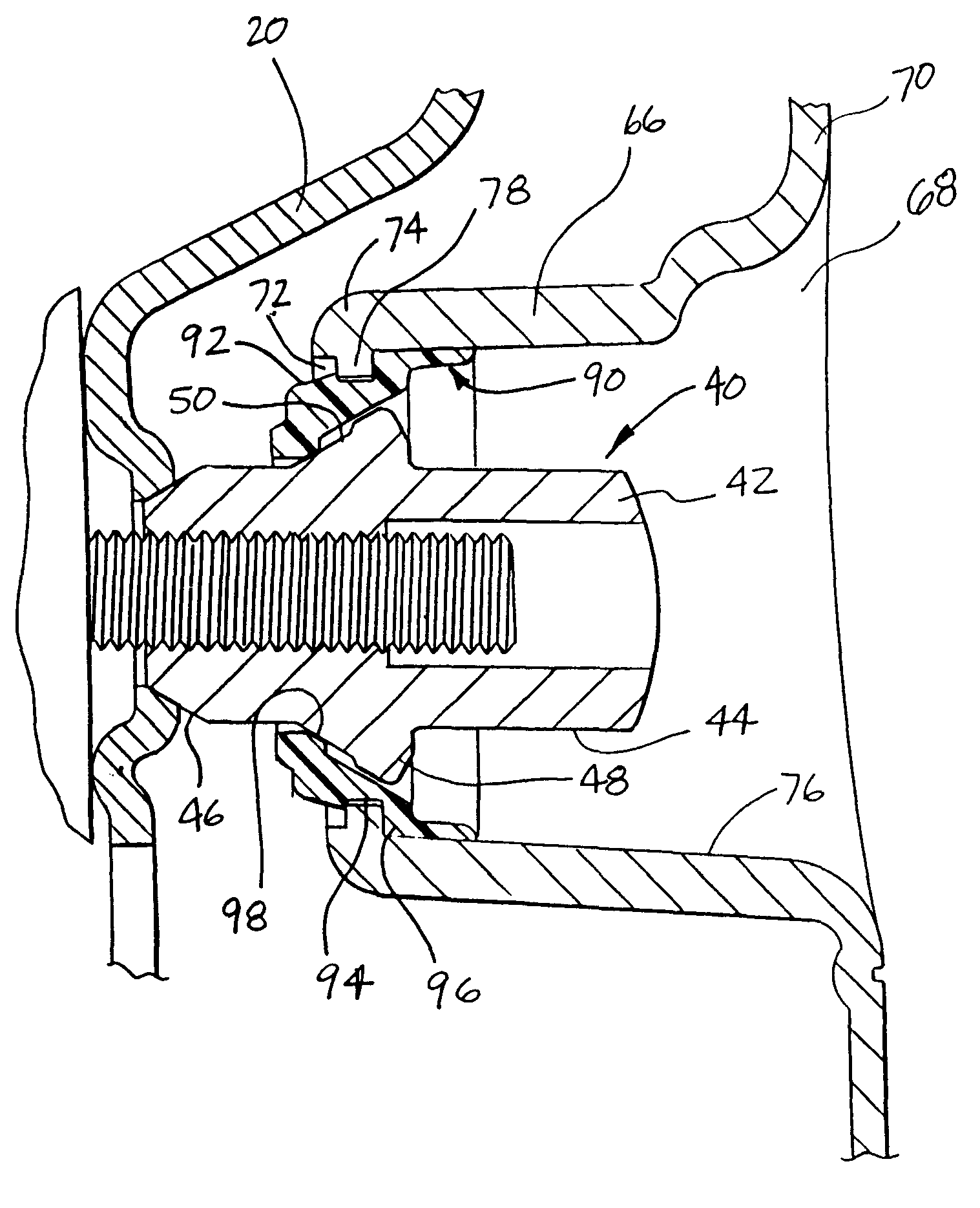Lug nut retention system for a chrome-plated wheel cover
- Summary
- Abstract
- Description
- Claims
- Application Information
AI Technical Summary
Benefits of technology
Problems solved by technology
Method used
Image
Examples
Embodiment Construction
[0030]Referring in detail to FIG. 1, the wheel cover retention system of the present invention is a wheel 20 that includes a hub 22 that receives lug studs 24 that extend axially outward from an axle flange 26, through a brake disc 28, and along an axis of rotation 30 of the wheel 20. As will be apparent to one skilled in the art, the wheel 20 may be composed of steel, an aluminum alloy, or any suitable composite material and is mounted on the lug studs 24 and an axle flange hub 32. Lug nuts 40 are secured on the lug studs 24 to retain the wheel 20 to the axle flange 26.
[0031]A wheel cover 60 according to the present invention is provided that includes a base portion 61 having an outboard surface 62 that provides aesthetic value, and an oppositely disposed inboard surface 64. The outboard surface 62 of the wheel cover 60 can be painted or plated, for example with an attractive chrome finish. A plurality of open tubular extensions, or lug towers 66, axially extend inward from the inb...
PUM
 Login to View More
Login to View More Abstract
Description
Claims
Application Information
 Login to View More
Login to View More - R&D
- Intellectual Property
- Life Sciences
- Materials
- Tech Scout
- Unparalleled Data Quality
- Higher Quality Content
- 60% Fewer Hallucinations
Browse by: Latest US Patents, China's latest patents, Technical Efficacy Thesaurus, Application Domain, Technology Topic, Popular Technical Reports.
© 2025 PatSnap. All rights reserved.Legal|Privacy policy|Modern Slavery Act Transparency Statement|Sitemap|About US| Contact US: help@patsnap.com



